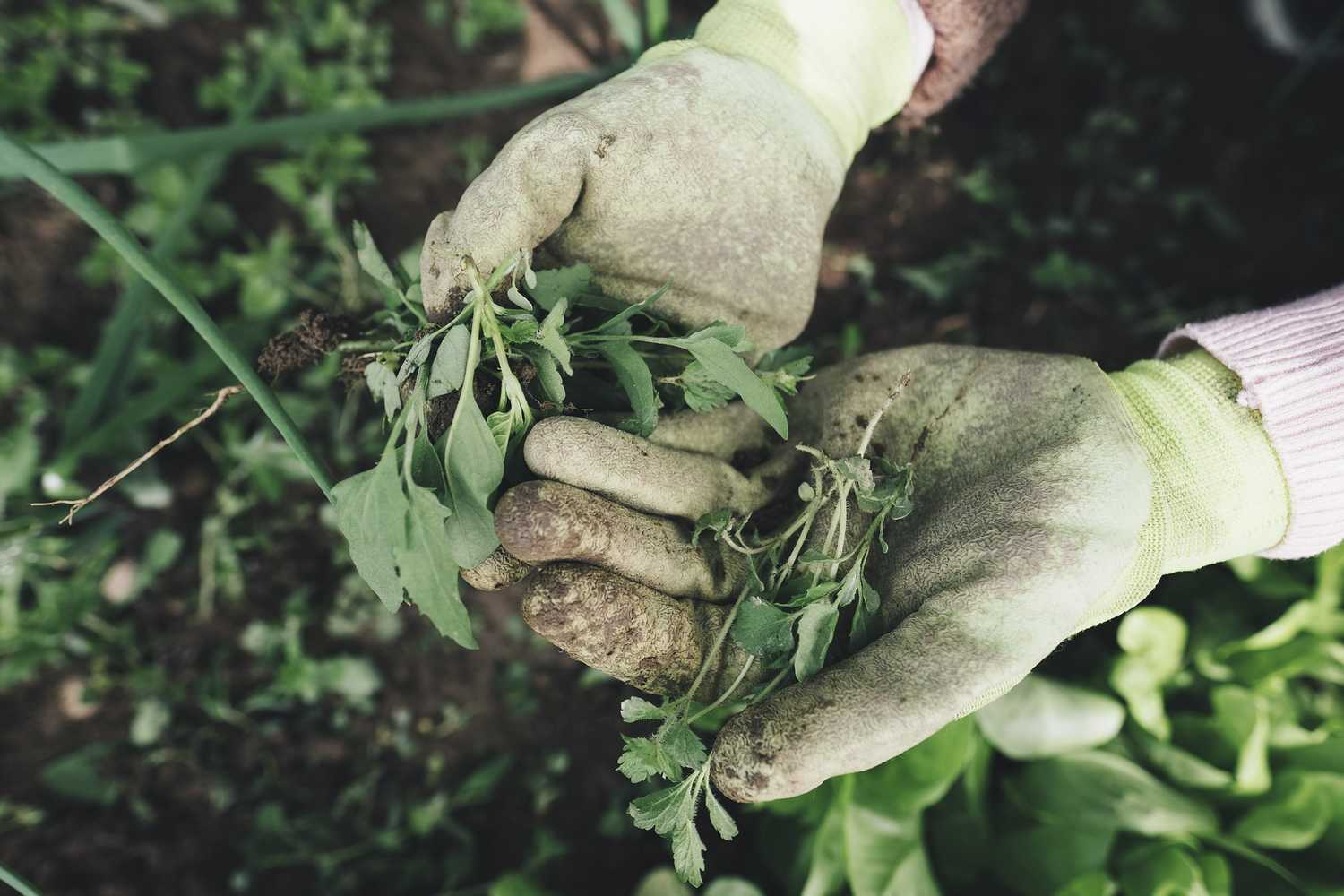
Weeding... the natural way!
Limit "weeds" without pesticidal
Contents
Weeds, which gardeners sometimes refer to as adventive plants, are everywhere! They can be found in flower beds, paths, sidewalks… Everywhere! Weeding then becomes everyone’s responsibility, and adventive plants are the enemy to be defeated. For those looking for a miracle solution (white vinegar, nettle manure, salt…), be aware that there is no natural or organic weed killer that is selective, total, and permanent.
Moreover, legislation has evolved: since 1st January 2017, the law in France prohibits the use of chemical weed killers, including the infamous glyphosate, in public spaces, parks, and forests. Its use by individuals has been banned since 1st January 2019. It is therefore high time to seriously consider natural weeding and ecological weed killers!
From experience, we know that true gardeners who use weed killers are rare. Nevertheless, many of us have a neighbour or a (annoying!) acquaintance who still uses them… Here are various tips you can share with them, as well as techniques that will help you weed, without chemical products, in different areas of the garden.
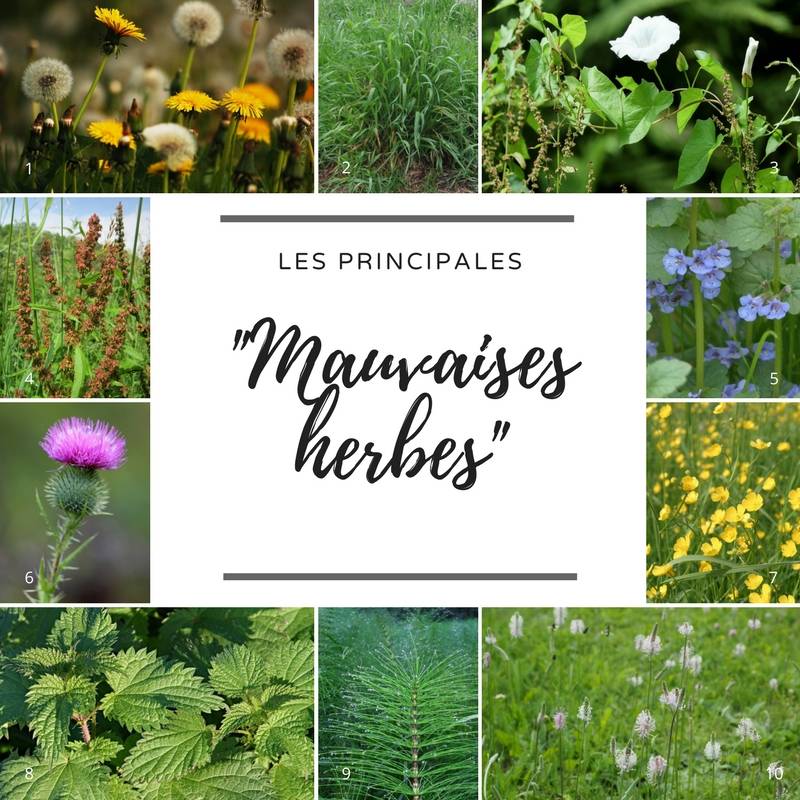
1. Dandelion 2. Couch grass 3. Bindweed 4. Wild sorrel 5. Ground ivy 6. Thistle 7. Buttercup 8. Nettle 9. Horsetail 10. Plantain
Weeding in gravel, sandy, or paved areas
Sandy, gravelled areas or even paved paths and terraces are not spared from the growth of “weeds”. They are particularly noticeable in these areas. These permeable zones should not be treated with a herbicide: at the slightest rain, the product is leached away and ends up in watercourses. Here are some solutions for organic weeding!
How to weed?
- The thermal weederUsing a thermal weeder is a good solution, provided you have a lightweight gas bottle. It is to be used on young shoots, especially in spring and early autumn. You can also use it in winter when it is particularly cold: the large temperature difference enhances its effectiveness. Note that the heat does not affect the roots of adult plants: to get rid of them, intervene often. The thermal weeder is very useful in paved paths without joints where adventives infiltrate. However, be aware that gas consumption is significant and it is a non-renewable resource. Finally, be very careful if you are weeding at the foot of a hedge and do not use this tool in areas covered with mulch… in summer or dry weather, a fire can easily start!.
- The manual weeding It is a classic that works very well! Using a scraper will allow you to dislodge young shoots. For plants with large roots like dandelion or plantain, use a hoe or a weeder.
- The use of natural herbicides Mineral areas are the only places where the use of natural herbicide is possible. Indeed, as they are not selective, it is difficult to use them in flower beds or vegetable gardens. The most effective is vinegar. Here is the recipe recommended by Jean-Paul Thorez, a well-known author and speaker: with a 5-litre sprayer filled with pure white vinegar, you can treat 40 m2 of your garden. Apply this treatment on sunny days and then rinse your sprayer. The effect is almost immediate, the foliage is destroyed but for the most resistant adventives like dandelion, the root system is not affected and regrowth may occur. Note that the plant is still weakened. You can repeat this treatment up to 6 times a year to improve effectiveness.
How to prevent the appearance of weeds in paths, etc.
- Also think about borders, they are very useful to prevent sand and gravel from escaping into the grass and to stop running grass from colonising the mineral area,
- Consider laying a geotextile in sandy or gravelled areas: it prevents the invasion of herbs from below.
- Seed with grass! This solution may seem a bit far-fetched but it works very well for large mineral areas that are very difficult to maintain. Many municipalities successfully practice it after making a slight addition of topsoil and using a slow-growing lawn. You will need to mow, of course… but it is much quicker than weeding!
Read also
Bindweed: how to get rid of it?Weeding the garden beds and the base of the hedges
Who hasn’t spent hours pulling out unwanted herbs from their garden beds? Here are some tips and tricks for effective weeding and preventing overgrowth.
How to weed garden beds?
As with the short grass meadow, the only natural way to weed a bed or the base of a hedge or tree is to manually pull out the adventive plants. To do this, we recommend you:
- Use appropriate tools: a gouge to extract the roots of plants that form large rosettes, a hoe or a hand cultivator for seedlings.
- Weed at the right time. In clay soil, intervene when the ground is neither too dry nor too sticky. In dry soil, weed two days after a good rain, as the soil is loose and has dried out. This way, the weeds come out easily.
- Be sure to remove adventive plants before they set seed. It is important to know these plants to manage them better and intervene at the right time.
- Don’t wait until May to start weeding. By this time, the plants have developed strong root systems, and some have already seeded. Start as early as March: weeds are easily spotted and can be pulled out easily. A quick swipe with a hoe at the collar cuts and kills the annuals, no need to exert more effort. For perennial unwanted herbs, however, this is not enough!
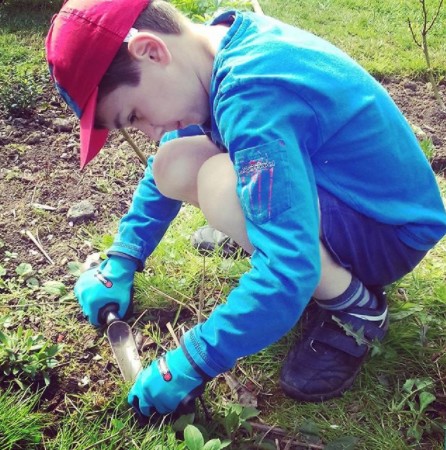 Weeding with a gouge: a real child’s play, easy and effective!
Weeding with a gouge: a real child’s play, easy and effective!
How to prevent weeds from establishing in garden beds?
To prevent your garden beds from being quickly overrun by unwanted herbs:
- Don’t hesitate to plant densely: your favourite plants will fill the space, leaving less room for adventive plants. Play their game and rely on competition.
- Plant ground-cover perennials or ground-cover bushes if you need to occupy a large space or a slope! These plants are unmatched in quickly filling gaps and help avoid the hassle of weeding, while keeping the area cool in summer. They also provide a refuge for beneficial garden insects. Some are deciduous, others are evergreen, and there are options for all situations: Lysimachia nummularia, Ajuga reptans, Persicaria affinis, Epimedium, Stachys byzantina, Vinca minor, Phlox subulata, etc…
- Mulch! The presence of a mulch will limit the development of weeds as well as reduce watering needs and improve soil quality. To learn everything about mulching, check out our advice sheet: “Mulch, why? How?“.
- Edge your borders: defining the garden beds with a border maker not only gives a neat appearance but also acts as a barrier against running weeds.
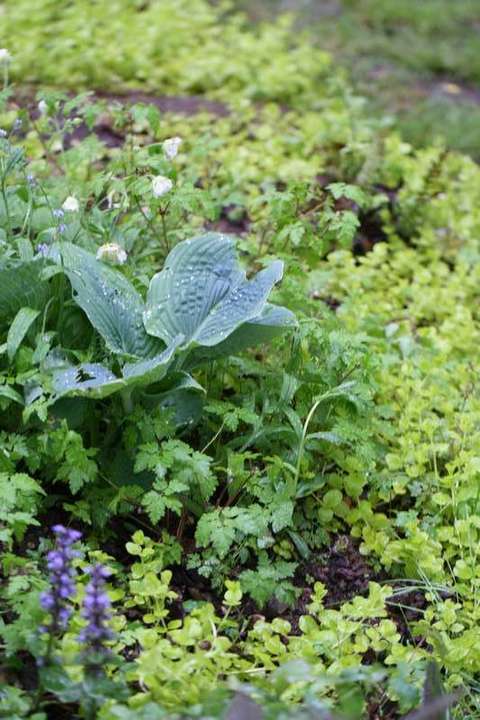 Carpet of Lysimachia nummularia ‘Aurea’
Carpet of Lysimachia nummularia ‘Aurea’
About the mulching fabric or “planting tarp”
Covering the soil with a tarp may seem like a solution to avoid weeding a bed. However, it is a very short-term solution, as adventive plants always find a way through (even growing directly on the tarp), and manual weeding becomes a nightmare. Not to mention that soil needs to be regularly amended to remain fertile. This is not possible through the tarp. As a result, the soil quickly becomes depleted, and the plants struggle (but not the weeds!). For more information, check out our article: “Mulching fabric: for or against“.
Weeding the vegetable garden
In the vegetable garden too, weeding is a common task that we could do without! These few tips will help lighten your workload.
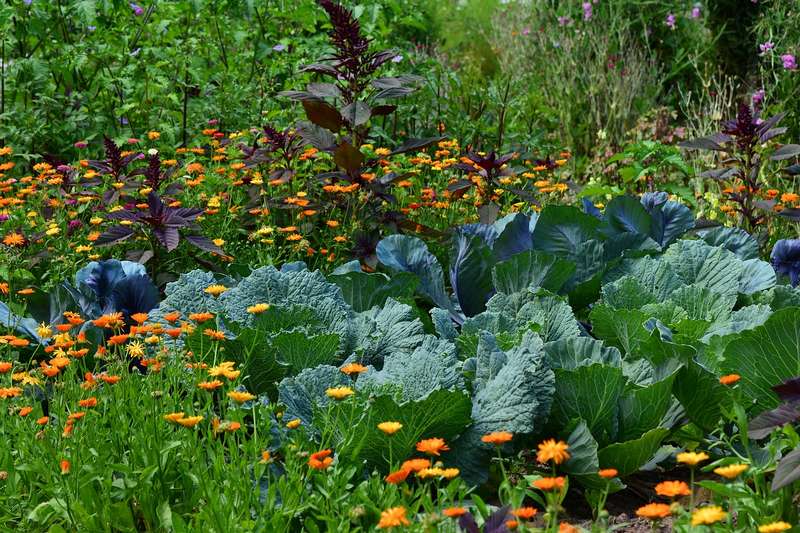 Preventing the Appearance of Adventive Plants in the Vegetable Garden
Preventing the Appearance of Adventive Plants in the Vegetable Garden
- As in the ornamental garden, remove adventive plants before they set seed, hoe and cultivate regularly.
- Practice the technique of false sowing. To do this, simply prepare the soil when it is warm enough, a few weeks before the planned date for planting or sowing vegetables. To learn more about this practice, check our advice sheet: “False Sowing, an Effective Technique to Reduce Weeds.”
- Sow or plant in straight rows to facilitate the use of the hoe.
- Mulch as soon as possible. Indeed, permanent mulching is not always possible in the vegetable garden as the soil often needs to dry out in spring, and for sowing, the soil must be bare. Once the plants are sufficiently developed, use straw or dried grass clippings to cover the soil around your vegetable plants. At the end of the season, apply a good layer of fallen leaves, straw, or even cardboard on areas free of crops: this occlusion is very effective in preventing the encroachment of weeds.
- Practice the art of companion planting. Associating plants has many advantages. This technique allows for the combination of plants, whether they are vegetables or not. It helps to protect vegetables from certain pests and diseases while also maximising the use of space, leaving little room for weeds. To learn more: check our advice sheet: “Crop Associations in the Vegetable Garden“.
- Sow green manures between the rows, before or after a crop. This has only advantages: these plants enrich and improve the texture of the soil, protect it from leaching due to rain and erosion. They also compete with adventive plants. Notable examples include phacelia, clover, white mustard, or buckwheat. Each green manure has its own properties and can be used according to the desired effects. Check our blog article: “Green Manures: Everything You Ever Wanted to Know!“
- Don’t forget about border management or install wooden or other material borders that can block the running roots of grass, effectively cutting it off at the base.
Natural herbicides
It is possible to do without chemical weedkillers, largely thanks to certain natural substances that make the task a bit easier without causing pollution. Among them, we note:
-
White vinegar or acetic acid
Vinegar is a non-toxic, non-polluting, biodegradable product that is very inexpensive and effective! (In fact, it is the only ingredient in the new “Speed” formula from the market leader in weedkillers… only the price per litre differs!). Its impact on the soil and its fauna seems very limited given that the doses used are negligible, and it is biodegradable and volatile.
-
An organic weedkiller: pelargonic acid
This is a herbicidal substance naturally secreted by the famous balcony geranium, particularly from Pelargonium odorant. Allowed in organic farming, it is said to be effective on young plants with two applications per week. Temperature is an important factor; it should be at least 10°C, knowing that effectiveness will be greater at 25°C, for example. Act with caution and discernment; even an organic weedkiller is not harmless, and the evidence is not sufficient to judge the long-term toxicity of the product. Remember to handle it with gloves.
-
Boiling cooking water from potatoes or rice
Boiling cooking waters are effective, but this is a solution that is impossible to implement in flower beds. Reserve it for gravelled areas and avoid using this water if it has been salted.
Homemade organic weed killers: beware of false good recipes!
Many natural weed killer recipes circulate on the internet. Often based on salt or other easily found substances, they are not without consequences for the environment. Here are some substances we advise against using.
-
Salt
Be careful, contrary to what is often read, the use of salt as a weed killer is anything but ecological! Regardless of the amount, it has a more than harmful impact on the environment. Indeed, the accumulation of salt pollutes the soil, groundwater, and has destructive effects on wildlife and flora sensitive to the salinity of the medium.
-
Bleach
Bleach is ecotoxic and corrosive. And as everyone knows, it is also a powerful biocide, so it is unlikely to be appreciated by bacteria, fungi, and other beneficial underground microorganisms.
-
Nettle Manure
Nettle manure is quite effective against adventive plants, but its intensive use could lead to soil and water pollution due to its high nitrogen content.
Consult our advice sheet: “Nettle, a plant with many benefits“.
-
Baking Soda
It should not be forgotten that baking soda (not to be confused with caustic soda) is a salt and, like salt, its use in large quantities is not harmless to the environment.
-
Chemical Weed Killers Labeled “Biodegradable”
Do not give in to the sirens of advertising promising immediate cleaning with no consequences for crops. Roundup, the leader in this type of campaign, long claimed to be biodegradable. It has been banned from making such claims since it was discovered that glyphosate, which it contains, as well as many so-called “100% effective” weed killers, can be found in drinking water.
Instead, muster your courage, use a weeding tool, a broadfork, a hoe, etc… it is the most effective weed killer and the best for your health!
Another look at weeds
There are no weeds in the strict sense, but simply spontaneous plants that rarely grow where the gardener would like them to. What if we looked at these wildlings from a different perspective?
Moreover, often recommended in municipalities, grassing helps to significantly reduce maintenance and, by extension, the use of plant protection products, while greening urban areas.
Adventive plants can also be an integral part of the garden, even in flower beds. And a short grass meadow dotted with daisies, buttercups, or clovers is beautiful, and the bees will thank you.
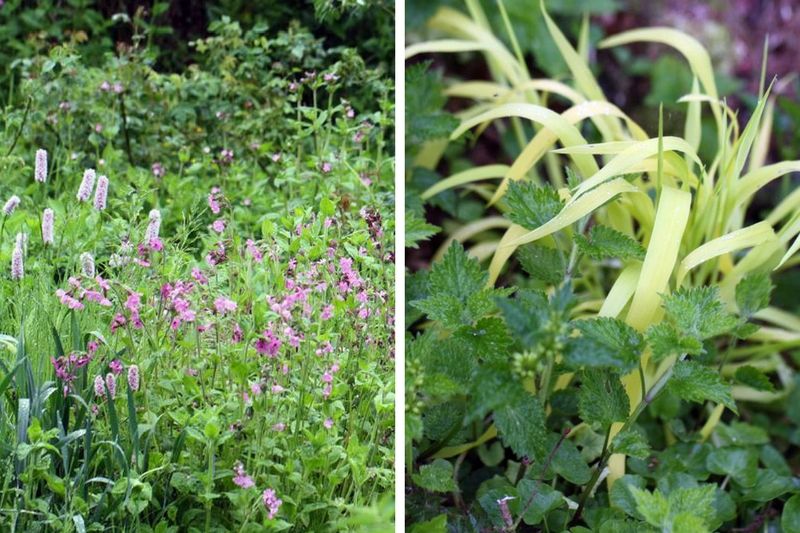
On the left: Persicaria bistorta and Silene dioica (red campion) – On the right: Millium effusum ‘Aureum’ and Lamium galeobdolon (yellow archangel)
Instead of exhausting yourself trying to eradicate them from your garden (which is a lost cause), simply limit their spread so they do not hinder the growth of your favourite plants.
Whether composted or placed directly in the flower beds, they naturally enrich the soil.
Wild plants are essential for wildlife, especially for the gardener’s helpers, providing them with shelter, food, and breeding grounds.
Convert yourself; it is not about abandoning your garden, but about de-dramatising and gaining tolerance. A garden with “weeds” can be beautiful! So, reconcile with them, learn to know them better to use them wisely. Do not hesitate, welcome biodiversity into your garden!
- Subscribe!
- Contents































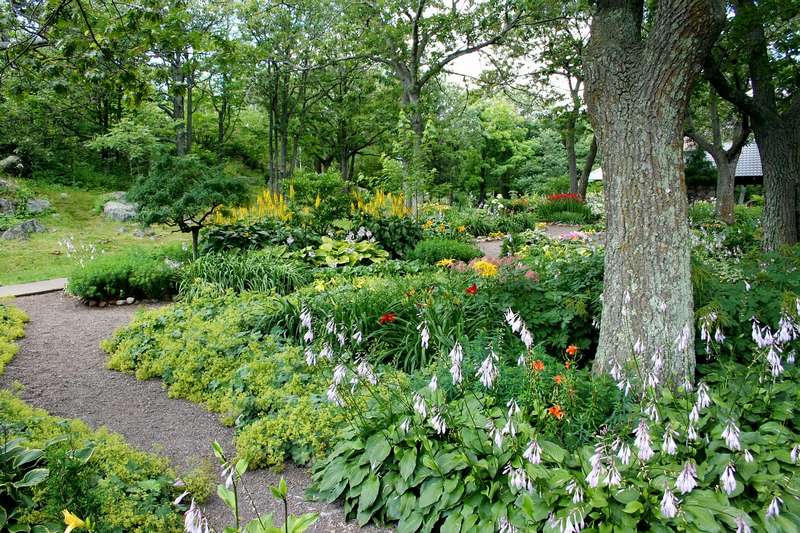
Comments